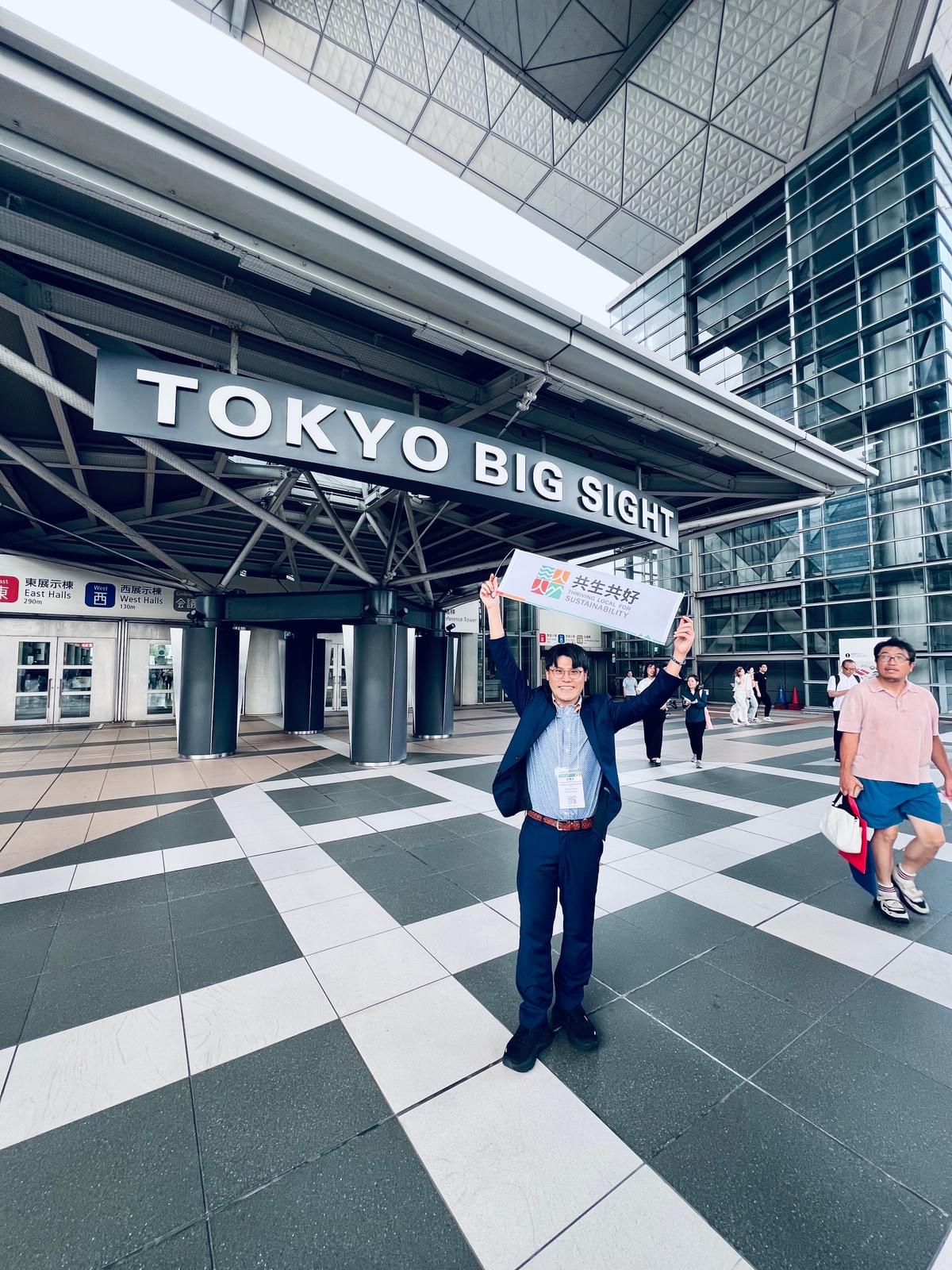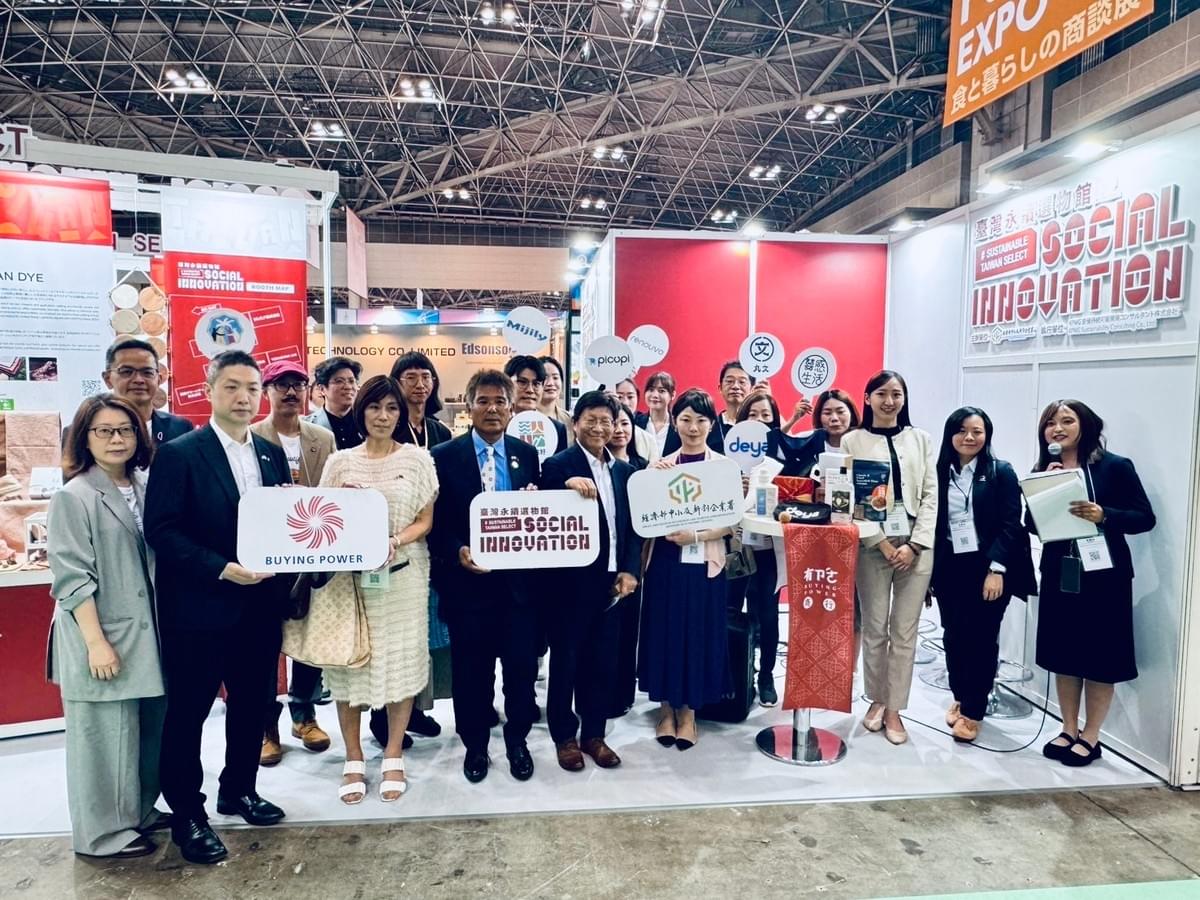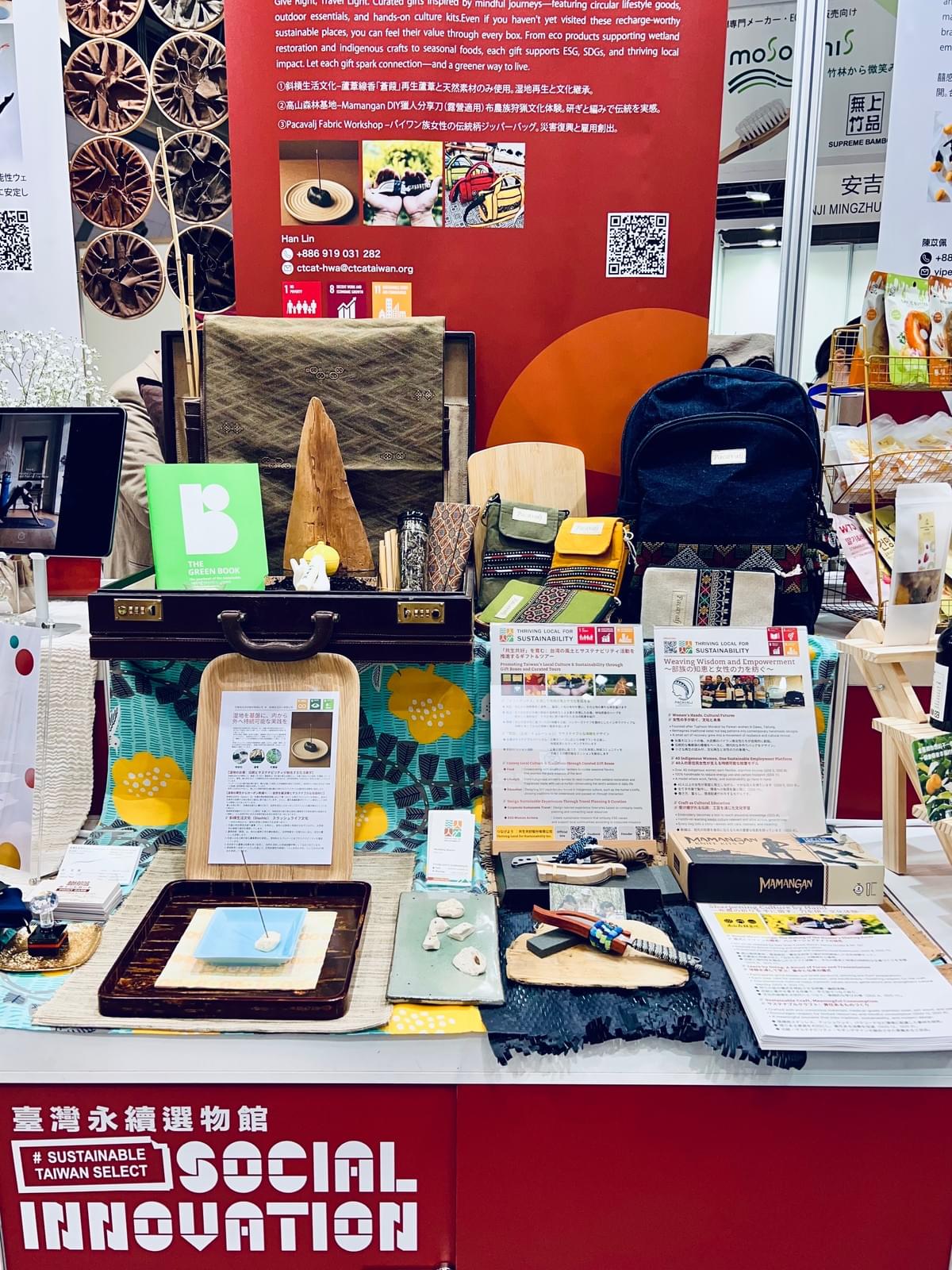1️⃣ Why did we exhibit in Japan?
Tokyo Lifestyle Week is Japan’s largest trade show for consumer goods, gathering 1,050 exhibitors from 20 countries and 47,000 buyers from 30 regions. It’s not just a trade fair—it’s a key opportunity for Taiwan’s local brands to enter the global design and supply chain.
2️⃣ Why does this show matter to us?
Covering nine curated zones from interior design and home goods to sustainable products, it highlights design, function, and brand values—deeply aligned with our mission in sustainable living.

3️⃣ Why was Thriving Local for Sustainability at Tokyo Big Sight?
As part of the Sustainable Taiwan Select Pavilion, supported by the SMESA (Small and Medium Enterprise and Startup Administration, Ministry of Economic Affairs, Taiwan) and KPMG, we showcased green practices rooted in land, culture, and community—amplifying micro, rural, and Indigenous innovations through the lens of the SDGs.

4️⃣ What did we bring?
Not just products, but values. Each item reflects a living ecosystem of place-based creativity and sustainable design. Our highlights:
🌿 PACAVALJ Fabric Workshop
- Founded by Paiwan women after Typhoon Morakot, transforming crisis into cultural resilience. (SDG 11)
- Revives traditional motifs in modern handmade bags. (SDG 12)
- Provides over 40 Indigenous women with flexible home-based income. (SDG 5, 8)
- 100% handmade, reducing energy and emissions. (SDG 11, 13)
- Preserves cultural knowledge through embroidery as intergenerational learning. (SDG 4)
- Each bag carries memory, identity, and pride. (SDG 11)
🌿 Slash Culture Living
- Revives wetland ecology through reed restoration in Hualien’s Xiuguluan River basin. (SDG 15)
- Reeds sequester carbon, offering a nature-based climate solution. (SDG 13)
- Converts reeds into natural incense and bio-materials. (SDG 12)
- Blends eco-tourism and education to boost awareness. (SDG 11, 4)
- “Cang-Jia” incense is handcrafted, plant-based, and biodegradable. (SDG 3, 12)
- Packaging uses reed tubes and trays—zero waste from field to shelf. (SDG 12)
🌿
Gao Shan Forest Tribal Ranch
- Co-developed DIY ritual kits with Danzo Studio & Mr. Sci, inspired by Bunun culture. (SDG 17, 4)
- Hands-on knife sharpening and cord braiding as cultural learning. (SDG 11, 4)
- Creates return-to-village employment for Indigenous youth. (SDG 8, 11)
- Eco-friendly materials: stainless steel, wood, modular cords. (SDG 12)
- A souvenir that fuses story, sustainability, and design. (SDG 12)

5️⃣ What connections did we gain?
We engaged with key Japanese buyers (e.g. ISETAN, MUJI, DAISO, Loft) and sustainable brands. Each exchange helps build long-term visibility and collaboration.
6️⃣ Why is this exposure valuable?
As Japan’s peak summer buying season, it brings global buyers and creators together. Every conversation is a seed for cross-border synergy.
7️⃣ What does Thriving Local for Sustainability represent?
It’s a movement of action—co-learning with land, people, and nature. Through travel boxes, ESG field visits, and storytelling, we bring Taiwan’s resilience to the global stage.
“Take home a travel box—return to the heart of Taiwan island.”
8️⃣ How does this help local revitalization?
We collect firsthand feedback from Japanese buyers and form future partnerships. This year, two major Japanese companies invited us to collaborate—marking a vital step for local brands to go global.

